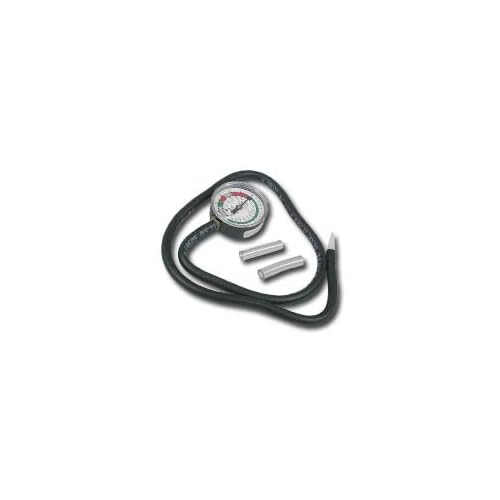sd22 in a 1948 Willys Truck.
Moderators: plenzen, Nissan_Ranger
-
elminero67
- Posts: 143
- Joined: 15 years ago
It can.
Even getting one rebuilt can be spendy.
My understanding form the FI guys is that as long as the pressure is not too high and that it does not keep pressure on the pump after its shut down its no problem.
This little guy is made specifically for that.
My understanding is that they are made to push more than suck.
That being said, the tank is only about 2 feet from the engine anyway so in this case not a problem.
If it the tank was mounted way in back then putting this pump back there would be the way to go.
Or so I am led to believe.
Even getting one rebuilt can be spendy.
My understanding form the FI guys is that as long as the pressure is not too high and that it does not keep pressure on the pump after its shut down its no problem.
This little guy is made specifically for that.
My understanding is that they are made to push more than suck.
That being said, the tank is only about 2 feet from the engine anyway so in this case not a problem.
If it the tank was mounted way in back then putting this pump back there would be the way to go.
Or so I am led to believe.
Retired Pauly
Problem with being retired is that you never get a day off.
1987 D21-J SD25 KC
KJLGD21FN
Problem with being retired is that you never get a day off.
1987 D21-J SD25 KC
KJLGD21FN
- asavage
- Site Admin
- Posts: 5459
- Joined: 20 years ago
- Location: Oak Harbor, Wash.
- Has thanked: 4 times
- Been thanked: 4 times
- Contact:
I think I've caught up on this thread.
The trans you received with your SD23 looks to be a cable-operated 4-speed. It clearly has three shift rails and no overdrive gear. I'm assuming that the top lever selects which rail the side lever is actuating. If that's the case, you should be able to pull the side lever in and out of the case a little, maybe 3/4".
On the VE-style IPs: it bears repeating that ours are NOT VE IPs, only VE-style IPs. Kiki-Diesel licensed the technology, and a lot of parts do interchange, but these are not Bosch IPs. Links to the Bosch Yellow Book for these are in this post. I own this book; excerpts are below.
The VEs are called (by Bosch) Distributor type IPs; the Inline IPs are called Inline
The lift pump on the Inline IP is a plunger with check valves, and usually has an external primer pump.
The lift pump on the Distributor IP is a vane pump (very similar to a conventional power steering pump) built into the front section of the IP housing. Priming is usually handled by a diaphragm pump located on the filter housing, not the IP.
(click on any image for larger)
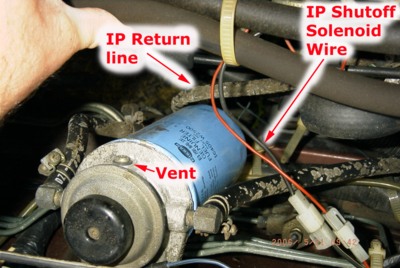
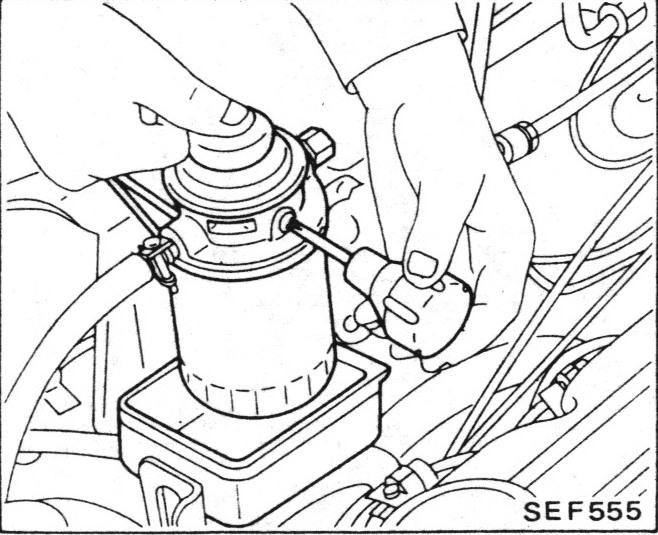
Cutaways of the vane lift pump on VE-type IPs:

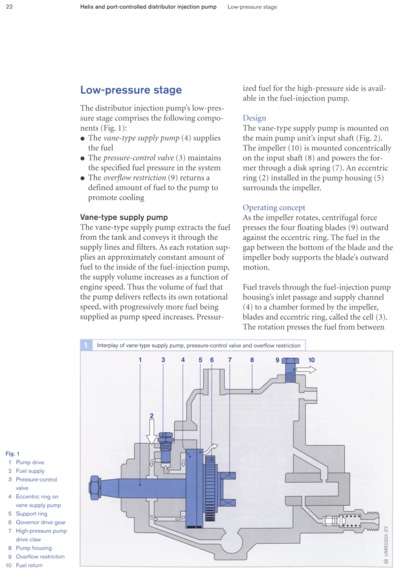

This lift pump is very adequate to sucking fuel from a fuel tank and through a very fine filter. No additional external pusher pump is needed -- when it's new and in good condition. However, the vane pump wears out, and it wears out fairly fast. Very fast if your fuel isn't clean, or if it isn't "fuel" in the conventional sense (ie waste motor oil (WMO), waste vegetable oil (WVO), or similar).
The Inline IP is much, much more tolerant of both dirty and viscous "fuels".
You can mask a failed or failing lift pump by plumbing in an external pusher pump. There's a downside, though . . .
The lift pump in the VE-type IPs doesn't just pull fuel up to the distributor. It also pressurizes the internals. Under normal operating conditions, the housing pressure can reach at least 105 PSI. You read that right. Why?
The Distributor IP's timing advancing mechanism isn't flyweights like a conventional ignition distributor, or as used on the Inline type IPs. It's hydraulic, and the vane pump provides the pressure.
Little or no vane pump pressure? No IP timing advance. Black smoke, noisy (rattly) engine operation.
Now you know why your SD23 sounds louder. You will want to have your IP rebuilt.
It's a very, very common problem with used VE-type IPs.
I am out of time, have to get to work, or I'd post more. There's some more pics I have of a failed vane pump from a Toyota I had to rebuild the IP on a few years back, I'll dig them out later.
[later]
Tom Sigmond's Toyota thread.
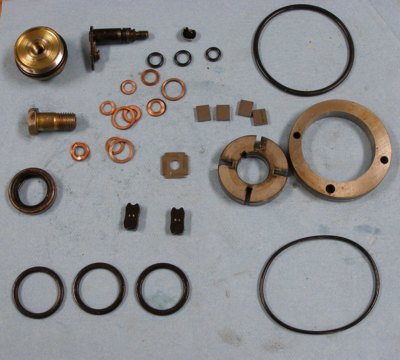

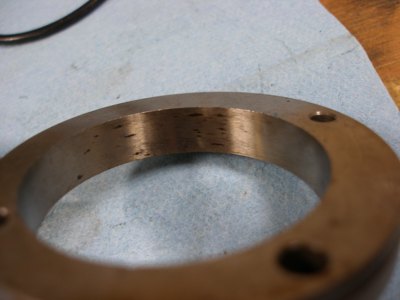
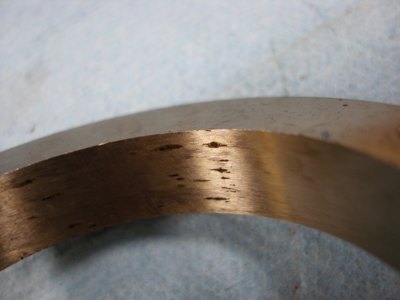
The trans you received with your SD23 looks to be a cable-operated 4-speed. It clearly has three shift rails and no overdrive gear. I'm assuming that the top lever selects which rail the side lever is actuating. If that's the case, you should be able to pull the side lever in and out of the case a little, maybe 3/4".
On the VE-style IPs: it bears repeating that ours are NOT VE IPs, only VE-style IPs. Kiki-Diesel licensed the technology, and a lot of parts do interchange, but these are not Bosch IPs. Links to the Bosch Yellow Book for these are in this post. I own this book; excerpts are below.
The VEs are called (by Bosch) Distributor type IPs; the Inline IPs are called Inline
The lift pump on the Inline IP is a plunger with check valves, and usually has an external primer pump.
The lift pump on the Distributor IP is a vane pump (very similar to a conventional power steering pump) built into the front section of the IP housing. Priming is usually handled by a diaphragm pump located on the filter housing, not the IP.
(click on any image for larger)


Cutaways of the vane lift pump on VE-type IPs:



This lift pump is very adequate to sucking fuel from a fuel tank and through a very fine filter. No additional external pusher pump is needed -- when it's new and in good condition. However, the vane pump wears out, and it wears out fairly fast. Very fast if your fuel isn't clean, or if it isn't "fuel" in the conventional sense (ie waste motor oil (WMO), waste vegetable oil (WVO), or similar).
The Inline IP is much, much more tolerant of both dirty and viscous "fuels".
You can mask a failed or failing lift pump by plumbing in an external pusher pump. There's a downside, though . . .
The lift pump in the VE-type IPs doesn't just pull fuel up to the distributor. It also pressurizes the internals. Under normal operating conditions, the housing pressure can reach at least 105 PSI. You read that right. Why?
The Distributor IP's timing advancing mechanism isn't flyweights like a conventional ignition distributor, or as used on the Inline type IPs. It's hydraulic, and the vane pump provides the pressure.
Little or no vane pump pressure? No IP timing advance. Black smoke, noisy (rattly) engine operation.
Now you know why your SD23 sounds louder. You will want to have your IP rebuilt.
It's a very, very common problem with used VE-type IPs.
I am out of time, have to get to work, or I'd post more. There's some more pics I have of a failed vane pump from a Toyota I had to rebuild the IP on a few years back, I'll dig them out later.
[later]
Tom Sigmond's Toyota thread.




Regards,
Al S.
1982 Maxima diesel wagon, 2nd & 4th owner, 165k miles, rusty & burgundy/grey. Purchased 1996, SOLD 16Feb10
1983 Maxima diesel wagon, 199k miles, rusty, light yellow/light brown. SOLD 14Jul07
1981 720 SD22 (scrapped 04Sep07)
1983 Sentra CD17, 255k, bought 06Jul08, gave it away 22Jun10.
Al S.
1982 Maxima diesel wagon, 2nd & 4th owner, 165k miles, rusty & burgundy/grey. Purchased 1996, SOLD 16Feb10
1983 Maxima diesel wagon, 199k miles, rusty, light yellow/light brown. SOLD 14Jul07
1981 720 SD22 (scrapped 04Sep07)
1983 Sentra CD17, 255k, bought 06Jul08, gave it away 22Jun10.
I have the identical looking pieces in a bag on my bench in the garage. Mine are in a bit better shape than the one you show though.
( if i could remember how to load pics I would)
I think that people are calling the VE style( distributor ) pump a VE pump much like most people call it Posi Traction as opposed to limited slip and snow mobiles Skidoos, and hot tubs Jacuzzi etc.
maybe,,,,,,,,,,, shrug
I also have the same primer pump on the filter housing right beside the water trap/fuel heater. The little electric pump just eliminates all that screwing around with the bleeder etc. You can simply put an empty fuel filter on, start the pump for about a minute and your ready to go.
More of a convenience thing really I guess.
Some interesting reading/pictures here:
http://transportation.centennialcollege ... ibutor.pdf
( if i could remember how to load pics I would)
I think that people are calling the VE style( distributor ) pump a VE pump much like most people call it Posi Traction as opposed to limited slip and snow mobiles Skidoos, and hot tubs Jacuzzi etc.
maybe,,,,,,,,,,, shrug
I also have the same primer pump on the filter housing right beside the water trap/fuel heater. The little electric pump just eliminates all that screwing around with the bleeder etc. You can simply put an empty fuel filter on, start the pump for about a minute and your ready to go.
More of a convenience thing really I guess.
Some interesting reading/pictures here:
http://transportation.centennialcollege ... ibutor.pdf
Retired Pauly
Problem with being retired is that you never get a day off.
1987 D21-J SD25 KC
KJLGD21FN
Problem with being retired is that you never get a day off.
1987 D21-J SD25 KC
KJLGD21FN
-
waynosworld
- Posts: 590
- Joined: 12 years ago
- Location: Vancouver Washington USA
- Has thanked: 2 times
- Been thanked: 2 times
-
elminero67
- Posts: 143
- Joined: 15 years ago
It is a great post, and as always your insight and expertise is appreciated.
but I think it is a little early to yank the pump and have it rebuilt until I have eliminated all other possibilities...
It runs great with the lift pump. No black smoke (very little smoke of any color), very responsive throttle, and the motor seems to be getting quieter after running for an hour or so.
I also have not changed the fuel filter yet, need to double check that I have the lines hooked up correctly. It is currently running off of 12' of gasoline size fuel line (don't recall the diameter-its small though). This did not cause issues with the inline IP, but the new IP may be different.
baby steps, I want to back up a step and see if it will run without the lift pump using just a short section of brand new hose directly from a clean container now that I am certain that everything is primed.
but I think it is a little early to yank the pump and have it rebuilt until I have eliminated all other possibilities...
It runs great with the lift pump. No black smoke (very little smoke of any color), very responsive throttle, and the motor seems to be getting quieter after running for an hour or so.
I also have not changed the fuel filter yet, need to double check that I have the lines hooked up correctly. It is currently running off of 12' of gasoline size fuel line (don't recall the diameter-its small though). This did not cause issues with the inline IP, but the new IP may be different.
baby steps, I want to back up a step and see if it will run without the lift pump using just a short section of brand new hose directly from a clean container now that I am certain that everything is primed.
- asavage
- Site Admin
- Posts: 5459
- Joined: 20 years ago
- Location: Oak Harbor, Wash.
- Has thanked: 4 times
- Been thanked: 4 times
- Contact:
No, I wouldn't assume that your IP is necessarily ready to be rebuilt, but it's not an entirely unlikely idea either.
In theory, the vane pump's output pressure can be tested, but I've never come up with the right combination of fittings to perform the pressure test. The general idea is to connect a pressure gauge to a port on the IP that is subject to the internal pressure; at one time I knew where that was, but it's lost to me ATM.
The vacuum gauge is your friend.
Plumb a cheap fuel pump pressure/vacuum tester gauge into the inlet line of your VE-type IP.
Please read the thread from this post forward. A quote from the beginning:
If you have a condition where it will only run with a pusher pump feeding the IP (like I referenced in the Toyota story link above, if you read it), then the IP is likely needing a rebuild -- the parts from the Toyota's VE-type IP are shown above. He was driving it for something like a year with that IP worn out, and it ran OK, but lacked power and was hard to fire off if he let it sit. It wouldn't even idle without the assistance. It was night and day after I had the IP rebuilt.
Paul: It's hard to beat the convenience of an electric pusher pump to prime the fuel filter, but . . .
Electric aftermarket fuel pumps are one of the least reliable things ever made (like computer fans). And how often do you change the fuel filter? Really, once every couple of years would be overkill for most people. I don't think I changed mine in the Maxima twice in something like 14 years, and then only because I got a bad batch of biodiesel (that used to be a common problem in the early days).
If the filter-head priming pump works, it's perfectly adequate to refill the filter and purge the system. I've had a bad one on a couple of rigs, and then it's a whole 'nuther matter.
In theory, the vane pump's output pressure can be tested, but I've never come up with the right combination of fittings to perform the pressure test. The general idea is to connect a pressure gauge to a port on the IP that is subject to the internal pressure; at one time I knew where that was, but it's lost to me ATM.
The vacuum gauge is your friend.
Plumb a cheap fuel pump pressure/vacuum tester gauge into the inlet line of your VE-type IP.
Please read the thread from this post forward. A quote from the beginning:
You'll see one of two things:
- Vacuum less that 2" (ie 5", 11", whatever): fuel supply restriction. Your VE's vane lift pump is working well enough to draw fuel from the tank, but you have a restriction somewhere.
- Vacuum under 2" = no fuel line/filter restriction or bad vane lift pump.
If you have a condition where it will only run with a pusher pump feeding the IP (like I referenced in the Toyota story link above, if you read it), then the IP is likely needing a rebuild -- the parts from the Toyota's VE-type IP are shown above. He was driving it for something like a year with that IP worn out, and it ran OK, but lacked power and was hard to fire off if he let it sit. It wouldn't even idle without the assistance. It was night and day after I had the IP rebuilt.
Paul: It's hard to beat the convenience of an electric pusher pump to prime the fuel filter, but . . .
Electric aftermarket fuel pumps are one of the least reliable things ever made (like computer fans). And how often do you change the fuel filter? Really, once every couple of years would be overkill for most people. I don't think I changed mine in the Maxima twice in something like 14 years, and then only because I got a bad batch of biodiesel (that used to be a common problem in the early days).
If the filter-head priming pump works, it's perfectly adequate to refill the filter and purge the system. I've had a bad one on a couple of rigs, and then it's a whole 'nuther matter.
Regards,
Al S.
1982 Maxima diesel wagon, 2nd & 4th owner, 165k miles, rusty & burgundy/grey. Purchased 1996, SOLD 16Feb10
1983 Maxima diesel wagon, 199k miles, rusty, light yellow/light brown. SOLD 14Jul07
1981 720 SD22 (scrapped 04Sep07)
1983 Sentra CD17, 255k, bought 06Jul08, gave it away 22Jun10.
Al S.
1982 Maxima diesel wagon, 2nd & 4th owner, 165k miles, rusty & burgundy/grey. Purchased 1996, SOLD 16Feb10
1983 Maxima diesel wagon, 199k miles, rusty, light yellow/light brown. SOLD 14Jul07
1981 720 SD22 (scrapped 04Sep07)
1983 Sentra CD17, 255k, bought 06Jul08, gave it away 22Jun10.
-
elminero67
- Posts: 143
- Joined: 15 years ago
I picked up a couple of feet of the "aquarium hose" (I always knew it as "beer bong hose").
First I got her running without the electric pump straight off the 5-gallon tank with the aquarium hose. After 20-30 seconds all of the tiny little bubbles disappeared.

After the motor was warm and I was sure that there no air bubbles in the line or injectors, I switched to run off the tank. It ran fine, but I could see a steady stream of tiny little bubbles coming into the fuel filter from the tank...
Tomorrow I am going to focus on the fuel line to the tank, the motor runs great but there is air getting in somewhere, and I suspect that it will be difficult to start in the morning.
Before calling it a day I moved the truck to the street to clean up the mess I had left on the driveway during the swap. This is the first time the truck has moved in a month, couldn't take it far as I am still waiting for a throttle cable as the cable is longer than the one on the SD22 with the throttle body and inline IP.
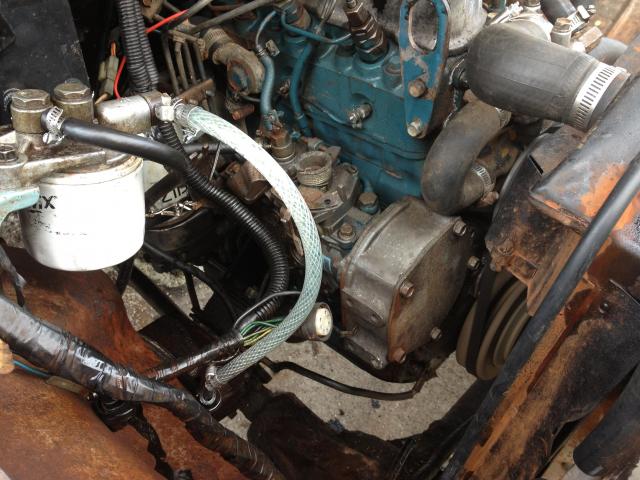

First I got her running without the electric pump straight off the 5-gallon tank with the aquarium hose. After 20-30 seconds all of the tiny little bubbles disappeared.

After the motor was warm and I was sure that there no air bubbles in the line or injectors, I switched to run off the tank. It ran fine, but I could see a steady stream of tiny little bubbles coming into the fuel filter from the tank...
Tomorrow I am going to focus on the fuel line to the tank, the motor runs great but there is air getting in somewhere, and I suspect that it will be difficult to start in the morning.
Before calling it a day I moved the truck to the street to clean up the mess I had left on the driveway during the swap. This is the first time the truck has moved in a month, couldn't take it far as I am still waiting for a throttle cable as the cable is longer than the one on the SD22 with the throttle body and inline IP.


-
waynosworld
- Posts: 590
- Joined: 12 years ago
- Location: Vancouver Washington USA
- Has thanked: 2 times
- Been thanked: 2 times
- asavage
- Site Admin
- Posts: 5459
- Joined: 20 years ago
- Location: Oak Harbor, Wash.
- Has thanked: 4 times
- Been thanked: 4 times
- Contact:
What I had in mind is the non-reinforced vinyl tubing, which is a lot cheaper and is nearly perfectly clear, but what you used got you to the desired result too.
See the 1970 Nova story near the end of this post of amusing fuel system stories.
Gasser/carbureted engines have enough return flow (on later rigs) or carb bowl venting (on non-return rigs) that small air leaks into the supply line won't necessarily give symptoms. You found a combination where it's a problem, probably.
See the 1970 Nova story near the end of this post of amusing fuel system stories.
Gasser/carbureted engines have enough return flow (on later rigs) or carb bowl venting (on non-return rigs) that small air leaks into the supply line won't necessarily give symptoms. You found a combination where it's a problem, probably.
Regards,
Al S.
1982 Maxima diesel wagon, 2nd & 4th owner, 165k miles, rusty & burgundy/grey. Purchased 1996, SOLD 16Feb10
1983 Maxima diesel wagon, 199k miles, rusty, light yellow/light brown. SOLD 14Jul07
1981 720 SD22 (scrapped 04Sep07)
1983 Sentra CD17, 255k, bought 06Jul08, gave it away 22Jun10.
Al S.
1982 Maxima diesel wagon, 2nd & 4th owner, 165k miles, rusty & burgundy/grey. Purchased 1996, SOLD 16Feb10
1983 Maxima diesel wagon, 199k miles, rusty, light yellow/light brown. SOLD 14Jul07
1981 720 SD22 (scrapped 04Sep07)
1983 Sentra CD17, 255k, bought 06Jul08, gave it away 22Jun10.
-
elminero67
- Posts: 143
- Joined: 15 years ago
The blue paper towel story is a hoot-who could guess something like that when you are trying to diagnose the problem?
As predicted, the clear fuel line did not have fuel in it this morning. It fired up as the fuel filter was full of fuel, but after a minute or two it died. The IP had pulled the fuel almost to the fuel filter, but died before it could remove all of the air.
At that point I closed the hood and walked away. It was too damn nice out to work on the truck. Oh well, I think I am getting closer to getting all of the bugs out. The throttle cable is enroute from Thailand, will take a few weeks.
As predicted, the clear fuel line did not have fuel in it this morning. It fired up as the fuel filter was full of fuel, but after a minute or two it died. The IP had pulled the fuel almost to the fuel filter, but died before it could remove all of the air.
At that point I closed the hood and walked away. It was too damn nice out to work on the truck. Oh well, I think I am getting closer to getting all of the bugs out. The throttle cable is enroute from Thailand, will take a few weeks.
-
elminero67
- Posts: 143
- Joined: 15 years ago
Had to step away from the project for a bit, feeling a little overwhelmed.
When I did the SD22 to SD23 swap, I underestimated all of the little details. I figured it would take a couple of weekends, has taken a couple of months.
So when I noticed that I was getting air bubbles in the fuel line, I suspected it wouldn't be an easy fix as all of the lines from the tank to the IP are new, steel lines, with the exception of a 24" section that connects the IP pump itself (for vibration issues).
Meaning that it was likely in the fuel tank itself. After devoting the last 4-5 weekends to this project, I don't have the energy to drop and fix the fuel tank at this time. I have a spare tank from a Scout diesel (SD33t), but changing tanks and welding new mounts involves pulling the bed...
So for the short term, I'm running an electric lift pump. Works great. Good news is that I was able to take her for a 20 mile test drive. I'm not sure I'm achieving full throttle with the current throttle cable setup, still the power increase from the SD22 to the SD23 is noticeable. I was able to easily accelerate up a modest (+/-2%) grade in 5th gear to 55 mph. Can't do much more as I'm running factory 5.38 gears. More importantly, my anxiety about my JDM motor being a lemon is laid to rest. This thing runs great, very little smoke, everything was as advertised by JDM.
When I did the SD22 to SD23 swap, I underestimated all of the little details. I figured it would take a couple of weekends, has taken a couple of months.
So when I noticed that I was getting air bubbles in the fuel line, I suspected it wouldn't be an easy fix as all of the lines from the tank to the IP are new, steel lines, with the exception of a 24" section that connects the IP pump itself (for vibration issues).
Meaning that it was likely in the fuel tank itself. After devoting the last 4-5 weekends to this project, I don't have the energy to drop and fix the fuel tank at this time. I have a spare tank from a Scout diesel (SD33t), but changing tanks and welding new mounts involves pulling the bed...
So for the short term, I'm running an electric lift pump. Works great. Good news is that I was able to take her for a 20 mile test drive. I'm not sure I'm achieving full throttle with the current throttle cable setup, still the power increase from the SD22 to the SD23 is noticeable. I was able to easily accelerate up a modest (+/-2%) grade in 5th gear to 55 mph. Can't do much more as I'm running factory 5.38 gears. More importantly, my anxiety about my JDM motor being a lemon is laid to rest. This thing runs great, very little smoke, everything was as advertised by JDM.
-
waynosworld
- Posts: 590
- Joined: 12 years ago
- Location: Vancouver Washington USA
- Has thanked: 2 times
- Been thanked: 2 times
Sometimes one has to walk away for a while, and then when you get back it doesn't seem as bad as when you left.
I have just forgotten my builds for weeks/months in the past, I just don't want to work on it anymore, but when I have time to think about it for a while, I come back and get a lot done fast.
Congrats on the 20 mile test drive, that should fix most the worries, and more power is always good. lol
I have just forgotten my builds for weeks/months in the past, I just don't want to work on it anymore, but when I have time to think about it for a while, I come back and get a lot done fast.
Congrats on the 20 mile test drive, that should fix most the worries, and more power is always good. lol
I know the voices are not real,
but they have some really good ideas.
but they have some really good ideas.
-
elminero67
- Posts: 143
- Joined: 15 years ago
Figured out the issue with the IP!
The reason it was getting air in the line was the (non-stock) gas tank. It sucks air when it is below 1/3 tank. Short term solution is keep the tank more than 1/2 full. Not a problem as it is a 23 gallon tank. Need to fix, but I'd like to keep it as it gives a 600+ mile range.
Compare to a stock Willys/Jeep getting 12 mpgs +10-12 gallon tank= 144 mile range-in a vehicle designed for the back country. Never understood that, but does explain why so many old jeeps have Jerry can strapped to them.
So onto the next issue. I'm contemplating pulling all of the wires and starting over. I have the original 720 wiring harness, but it is getting way to messy, with splices and junctions all over the place...
The reason it was getting air in the line was the (non-stock) gas tank. It sucks air when it is below 1/3 tank. Short term solution is keep the tank more than 1/2 full. Not a problem as it is a 23 gallon tank. Need to fix, but I'd like to keep it as it gives a 600+ mile range.
Compare to a stock Willys/Jeep getting 12 mpgs +10-12 gallon tank= 144 mile range-in a vehicle designed for the back country. Never understood that, but does explain why so many old jeeps have Jerry can strapped to them.
So onto the next issue. I'm contemplating pulling all of the wires and starting over. I have the original 720 wiring harness, but it is getting way to messy, with splices and junctions all over the place...
- asavage
- Site Admin
- Posts: 5459
- Joined: 20 years ago
- Location: Oak Harbor, Wash.
- Has thanked: 4 times
- Been thanked: 4 times
- Contact:
I had a 1975 (W115) 300D Mercedes with that problem, only it was 1/4 tank for the trigger point. I never got around to pulling the pickup and checking it out, but I assume that the dip tube got rusty or came apart. It would run perfectly until the fuel level dropped to 1/4.elminero67 wrote:The reason it was getting air in the line was the (non-stock) gas tank. It sucks air when it is below 1/3 tank.
Since I never really found the problem, I didn't include that one in the Amusing Fuel Stories.
However, now you know why I keep harping on using clear tubing and a vacuum gauge for diagnosing fuel starvation problems. If you read these forums much, you'll see that I mention these at least twice a year
Regards,
Al S.
1982 Maxima diesel wagon, 2nd & 4th owner, 165k miles, rusty & burgundy/grey. Purchased 1996, SOLD 16Feb10
1983 Maxima diesel wagon, 199k miles, rusty, light yellow/light brown. SOLD 14Jul07
1981 720 SD22 (scrapped 04Sep07)
1983 Sentra CD17, 255k, bought 06Jul08, gave it away 22Jun10.
Al S.
1982 Maxima diesel wagon, 2nd & 4th owner, 165k miles, rusty & burgundy/grey. Purchased 1996, SOLD 16Feb10
1983 Maxima diesel wagon, 199k miles, rusty, light yellow/light brown. SOLD 14Jul07
1981 720 SD22 (scrapped 04Sep07)
1983 Sentra CD17, 255k, bought 06Jul08, gave it away 22Jun10.
Who is online
Users browsing this forum: No registered users and 1 guest
